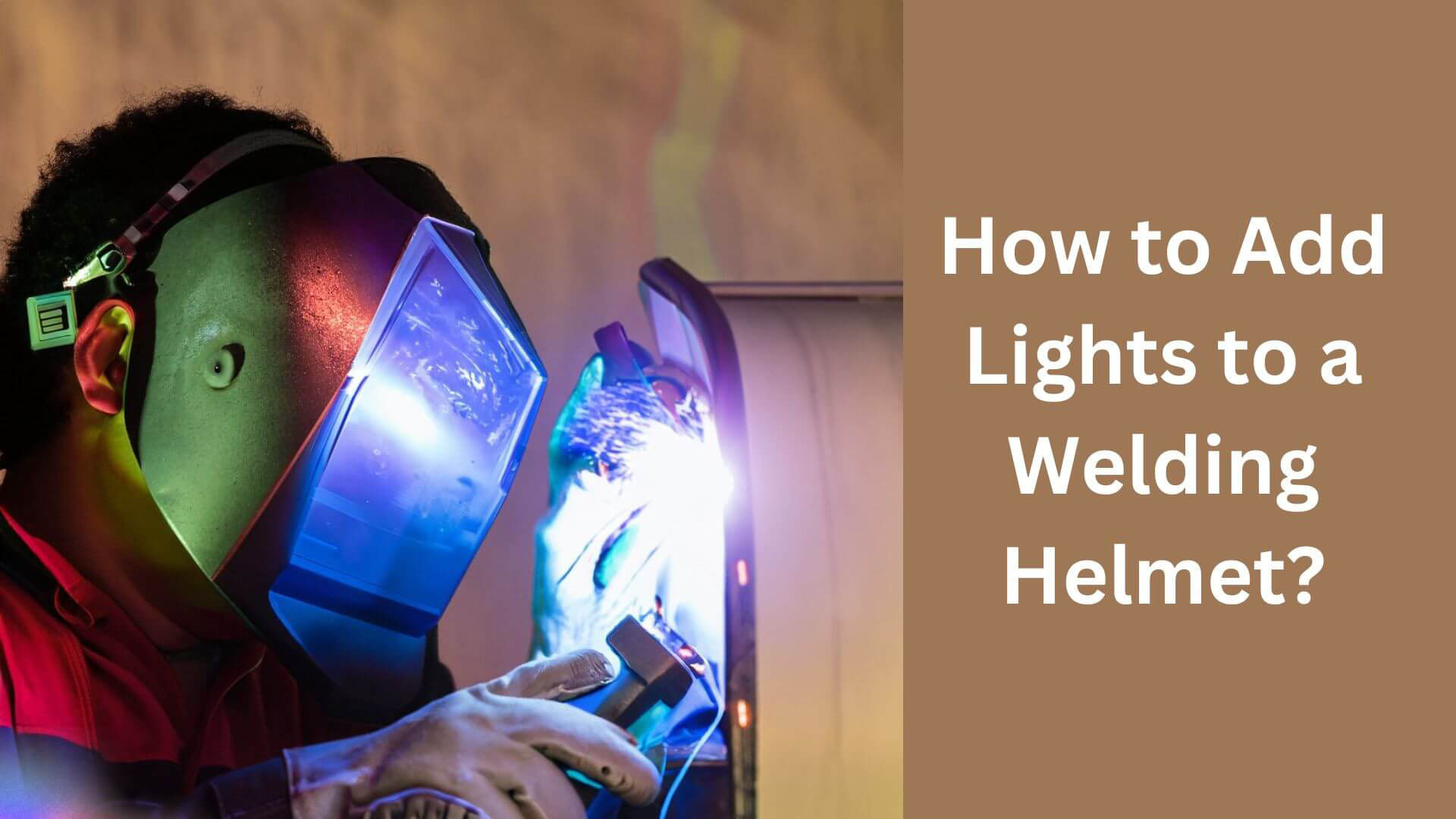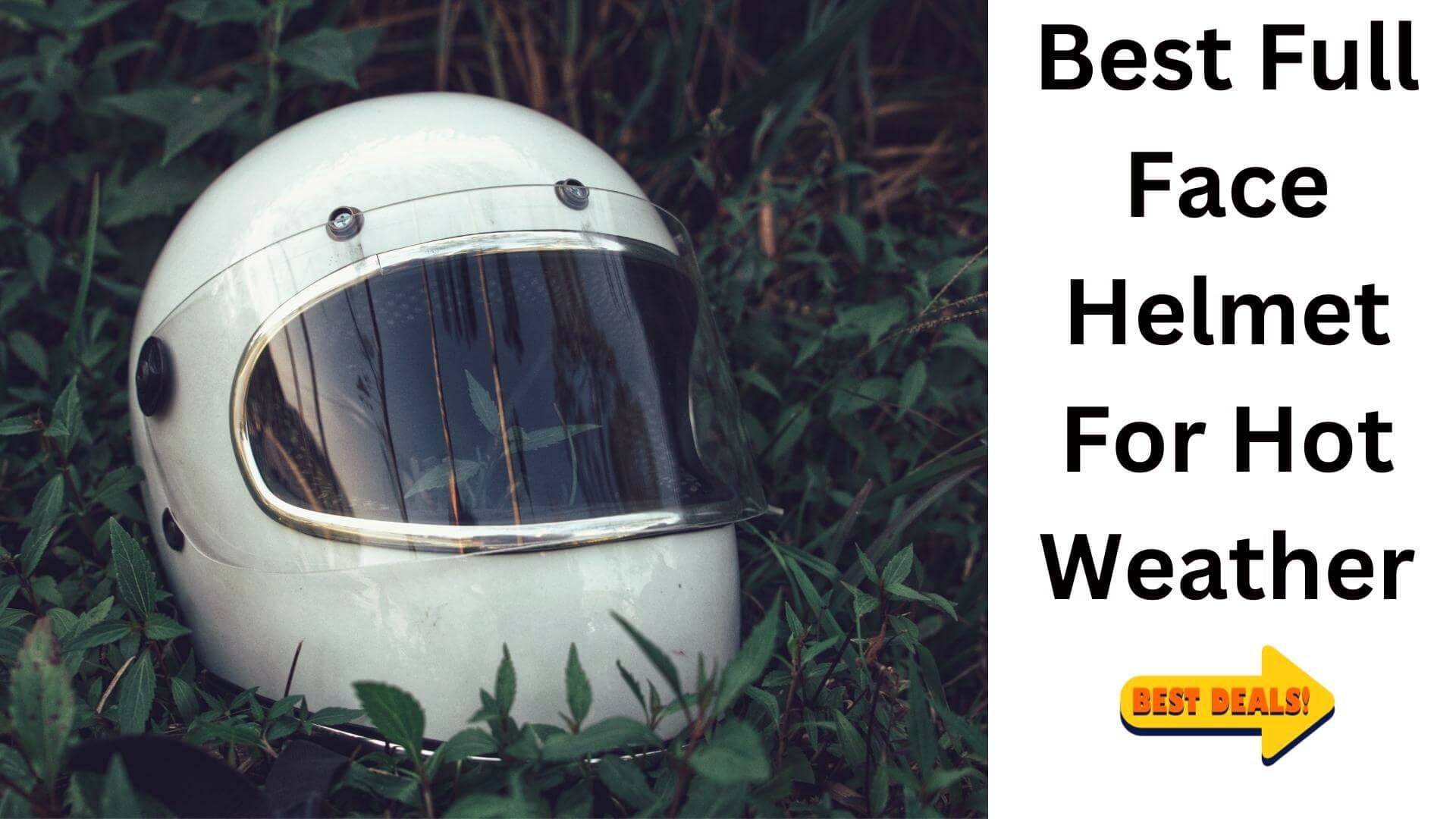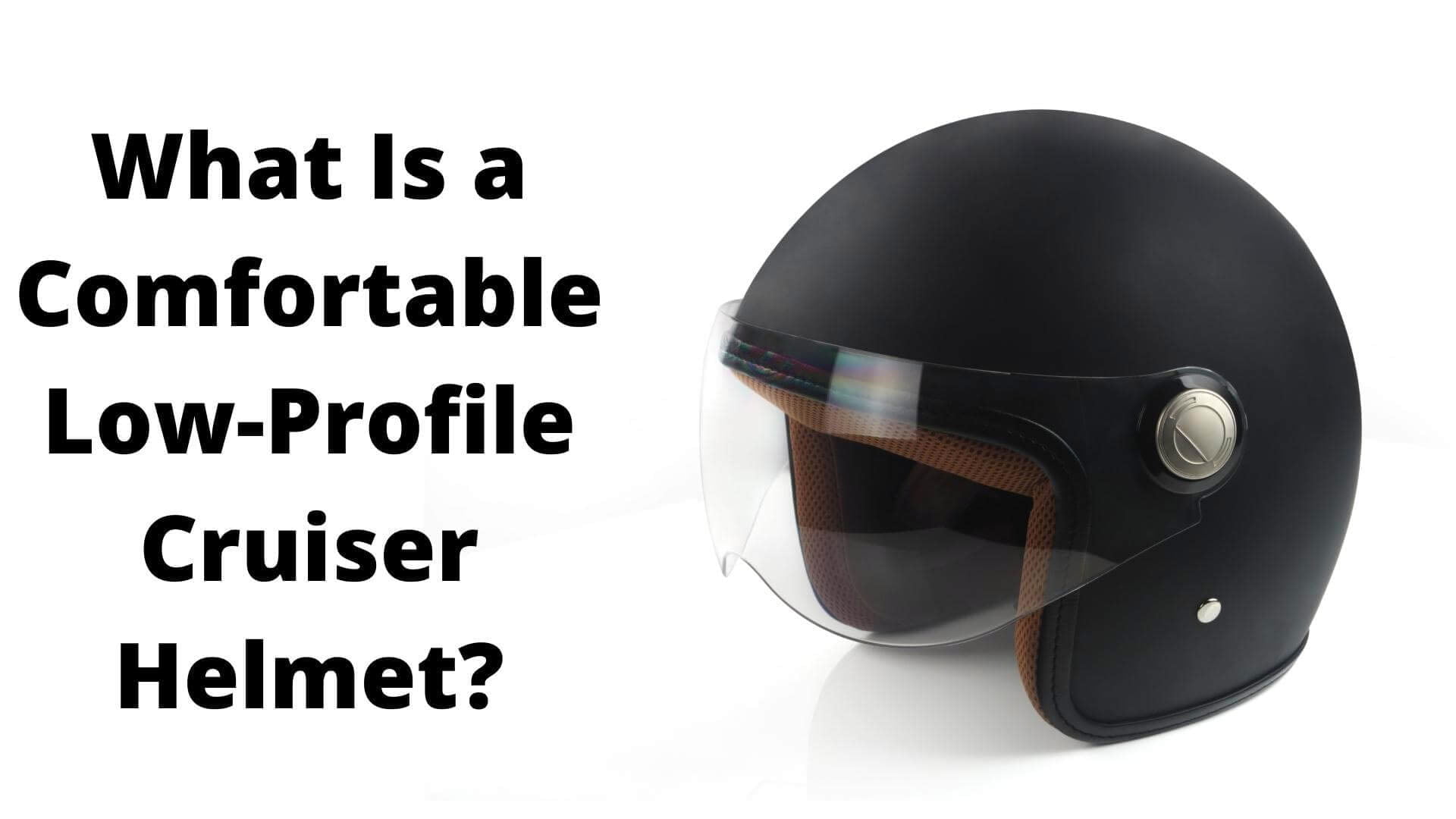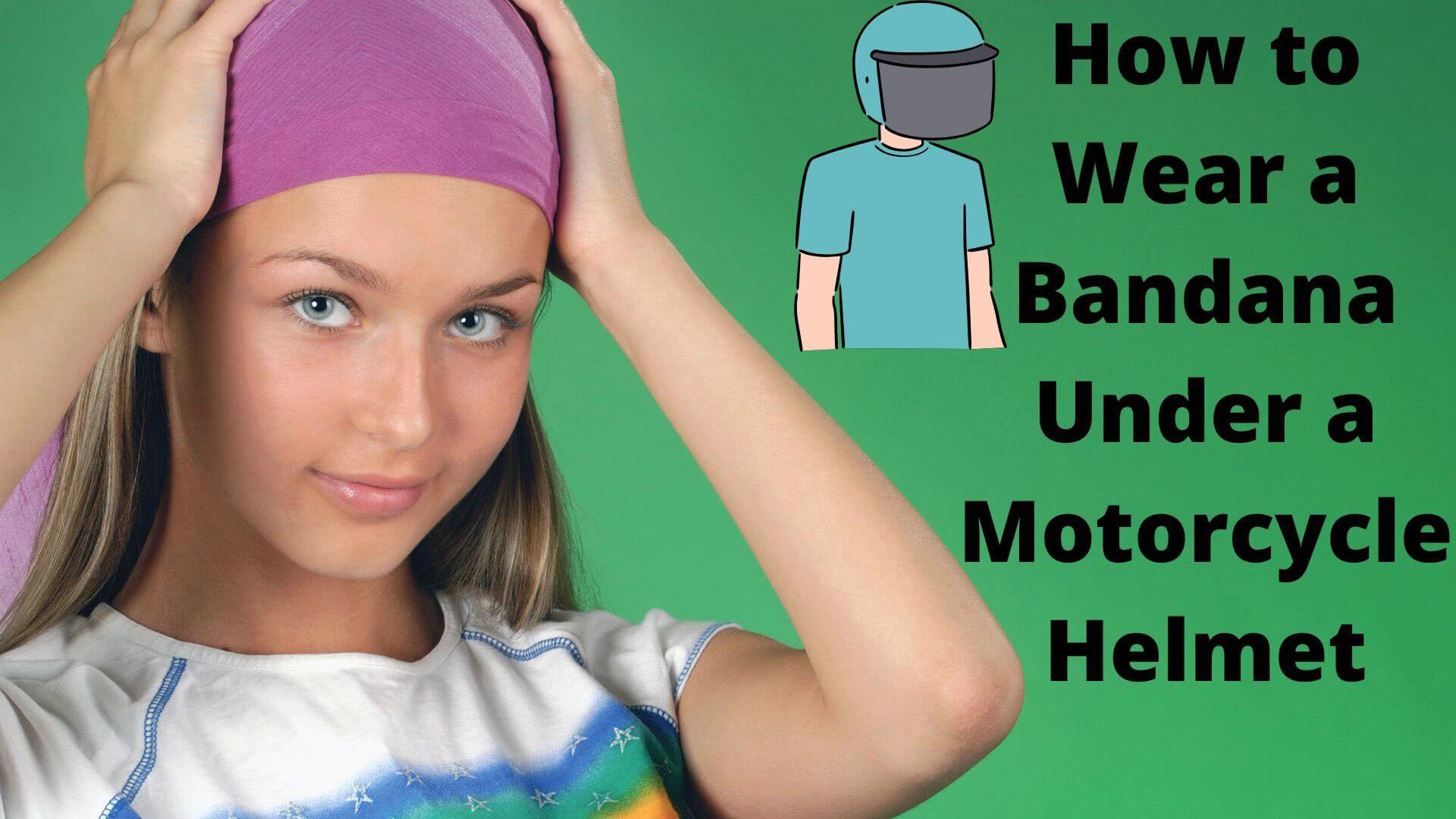How Tight Should a Motorcycle Helmet Be? You Need To Find The Right Fit For You
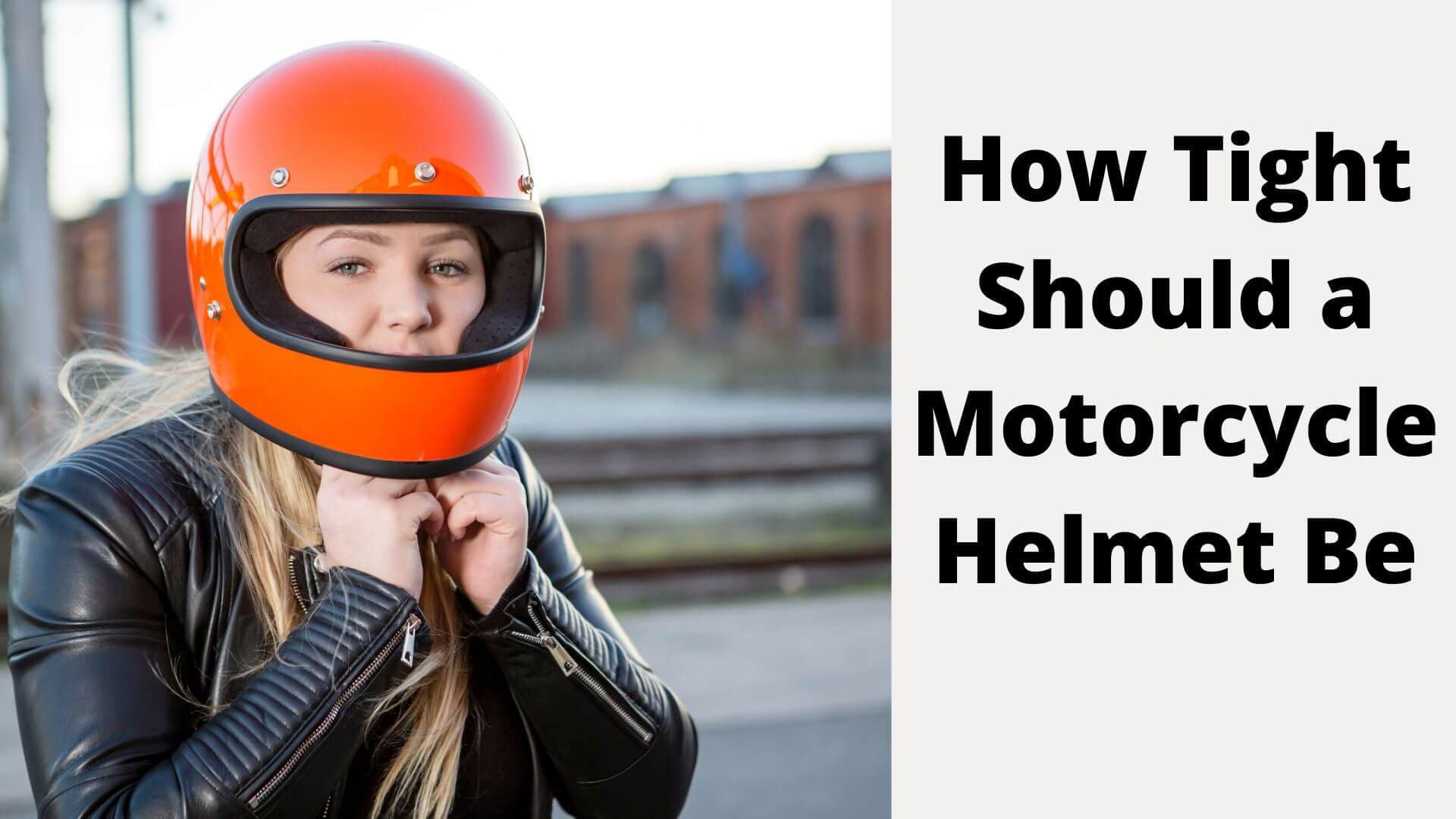
To maintain proper fit, a motorcycle helmet must be snug and tight around the head. Make sure the chin strap is neither too tight nor too loose. When in a collision, a slack belt could fall off, but a tight one could cut off your neck’s blood supply.
Headgear that is too tight can irritate or strain your face, chin, or neck if it’s too snug. Neither a loose nor a fast helmet will protect you if you are involved in a car accident. Also, a too-open helmet can fall off your head if you move a lot.
Too often, people buy helmets based on their general head size without considering their head’s shape or the helmet’s fit. This can lead to uncomfortable, even dangerous, conditions while riding.
You’ve probably heard motorcycle helmets should be snug around the entire head, but what does that mean in practice? And how tight should they be?
That’s why I’ve decided to look at the topic and give you the professional’s opinion on what motorcycle helmet size and fit should be.
What is the Correct Motorcycle Helmet Size?
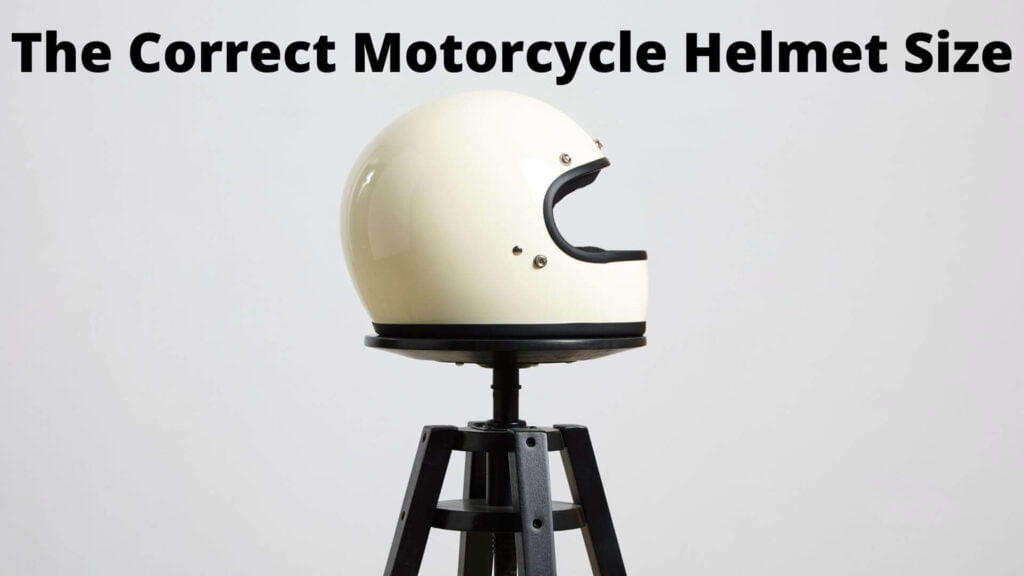
When it comes to choosing the right motorcycle helmet size, there are a few things you should keep in mind.
- First and foremost, the helmet must fit snugly on your head. Too tight of a fit can cause discomfort and even headaches, while an overly loose helmet may not provide the protection you need in a crash.
- Second, it is essential to consider your head shape and size when selecting a motorcycle helmet. Not all helmets will fit all riders, so be sure to try on several different sizes before making your purchase.
- Finally, ensure the helmet is CPSC certified to ensure its safety and compliance with federal standards.
How Do You Find The Perfect Fitting Motorcycle Helmet?
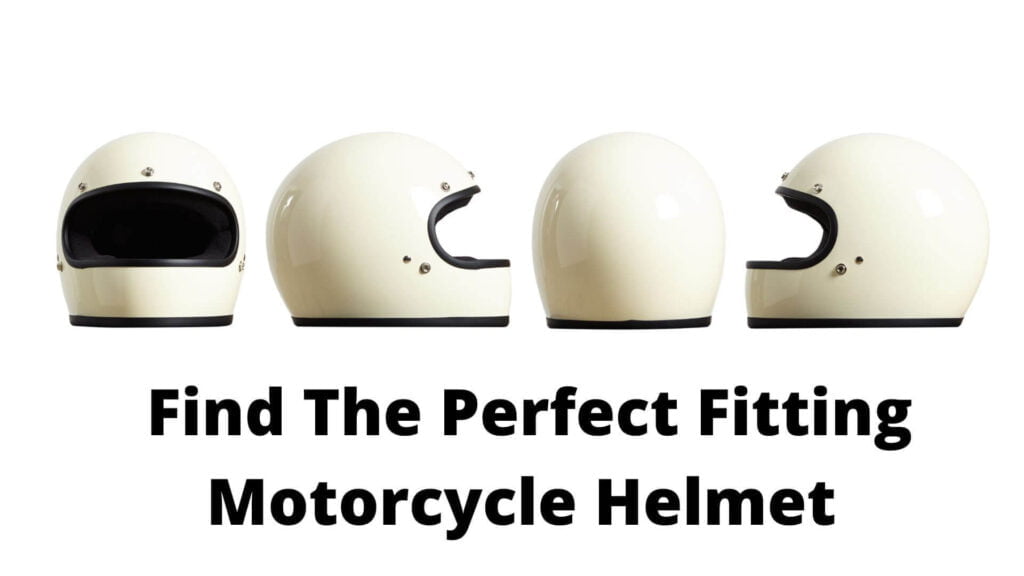
This is a crucial decision. How tight should a motorcycle helmet rely on its size? Before altering the size of your helmet, you must measure the circumference of your head.
It would help if you got a size small helmet with a head measurement to have a snug fit for your helmet. The table is shown below.
| Head Measurement (Inches) | Helmet Sizes |
| 21 1/4 | 6 3/4 |
| 21 5/8 | 6 7/8 |
| 22 | 7 |
| 22 3/8 | 7 1/8 |
| 22 3/4 | 7 1/4 |
| 23 1/8 | 7 3/8 |
| 23 7/8 | 7 5/8 |
| 24 1/4 | 7 3/4 |
How Tight Should a Motorcycle Helmet Be Step By Step
There is no universal answer to this question as it depends on a motorcycle’s make and model and the rider’s head shape and size.
Generally speaking. However, a motorcycle helmet should fit snugly enough not to move around or rub against the rider’s head when in use. If the helmet is too tight, it may cause discomfort or even headaches for the rider.
On the other hand, if the helmet is too loose, wind noise and rain droplets could flow inside and increase the risk of injury.
Finding a motorcycle helmet that fits appropriately based on each individual’s head shape and size is essential to avoid potential safety concerns.
Here are the steps to finding the right motorcycle helmet fit for you:
Step 1: Measure your head.
Start by measuring your head with a tape measure. Keep the tape measure still on your head; you don’t want any up and down or side to side movements.
Step 2: Find the size that fits.
Once you have measured your head, you will want to find a motorcycle helmet size. There are many different helmet sizes on the market, so it can be hard to know which size to choose.
Step 3: Try on the helmet.
Once you have found your motorcycle helmet size, it’s time to try on the helmet. Make sure to put it on correctly – it should fit snugly but not so tight that it causes pain or discomfort.
Step 4: Make sure the helmet is correctly fitted.
Once you have tried the helmet and it fits correctly, check that all the straps are appropriately adjusted. The helmet must be fitted correctly so that it doesn’t cause any pressure points or discomfort during the ride.
How Tight Should a New Motorcycle Helmet be?
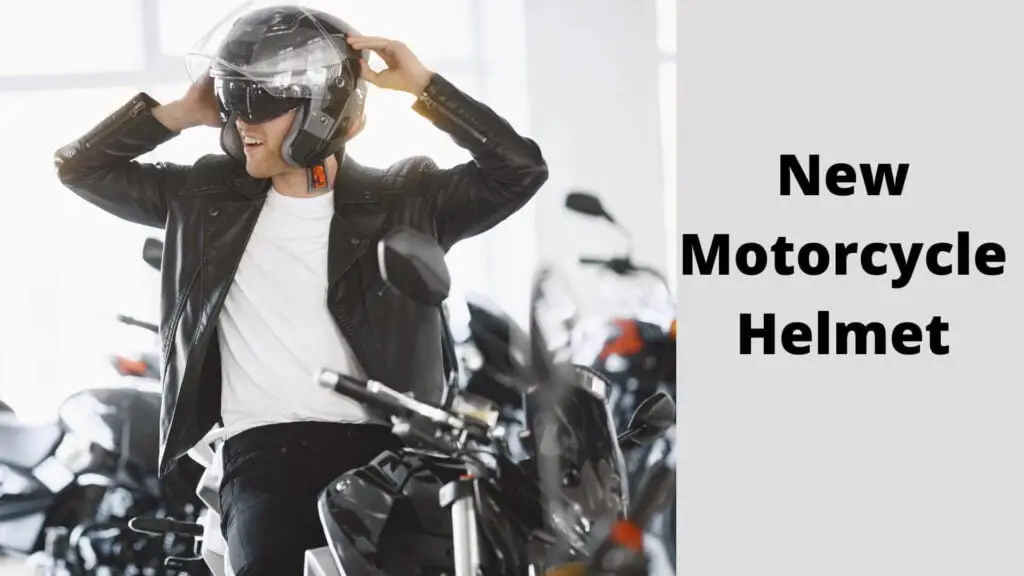
A new motorcycle helmet should fit so snugly that it is impossible to chew gum while wearing it. A brand-new helmet should hardly wiggle when the rider shakes their head up and down, left and right, or side to side.
However, if a new helmet causes pressure points in the head or face to pain, it is too tight.
A loose helmet moves in an uncomfortable, intrusive, and highly hazardous manner.
Your helmet should fit snugly without causing the following:
- Discomfort
- Numbness
- Or Agony.
As described in further detail in this article, a new helmet will break in and relax over time.
A new helmet should not move until you shake your head; even then, it should never slip down your forehead and hide your eyes.
You’re looking for a helmet that won’t compress your cheekbones but won’t move on its own.
There are numerous reasons a loose helmet is harmful, but these are the three most important:
- An excessively loose helmet can fly off the wearer’s head during a collision.
- A slack helmet can allow excessive wind to enter, resulting in headaches, loud noises, and long-term damage to or loss of hearing.
- A slack helmet might move about, obstructing your vision while operating a motorcycle.
A helmet can also be too tight, but it should be noted that the tightness of a new helmet will lessen after roughly 12 hours of use. The inside pads of a helmet compress as it is worn, forming a snug fit against the face.
Therefore, a brand-new helmet should fit snugly without discomfort, allowing for some slack while it breaks in.
A Few Points to Remember When Trying on a New Motorcycle Helmet:
- Ensure that, with the face shield closed on a full-face helmet, it is not contacting your chin or nose by pressing the chin piece.
- The cheek pads of a modern helmet should comfortably compress the cheeks without causing pain or discomfort.
- The neck roll on a new helmet with a neck roll should not pull the helmet away from your neck.
- Secure the chin strap and situate your head in an upright, healthy spine position. Attempt to lift your helmet without jarring your neck. If you can remove the helmet from your head with the chin strap fastened, the new helmet is not tight enough.
- If possible, walk about the store for 10 minutes with the new helmet on, but even 5 minutes is better than nothing. Remove the helmet and examine your face and head for redness, numbness, or pain, especially at the pressure points.
What Should I Do If My Bike Helmet Is Too Tight?
If you cannot put a motorcycle helmet onto your head, or if the pressure of the helmet causes pain, the helmet is too tight. The fit of a new helmet should be too snug for gum chewing, as it will loosen by 15 to 20% after 15 to 20 hours of use.
However, this is not the only indication that a helmet is too small. Pain, numbness, and discomfort indicate that you should wear a new helmet.
As indicated in the article, the incorrect size is not the only reason a helmet is ill-fitting; do not assume that the next size up is a good fit. Otherwise, you may end up purchasing a helmet that is too large.
Each helmet manufacturer forges its helmets in a somewhat distinct form.
Read More: how to stretch a motorcycle helmet for your comfort.
How Tight Should a Motorcycle Helmet Chin Strap Be?
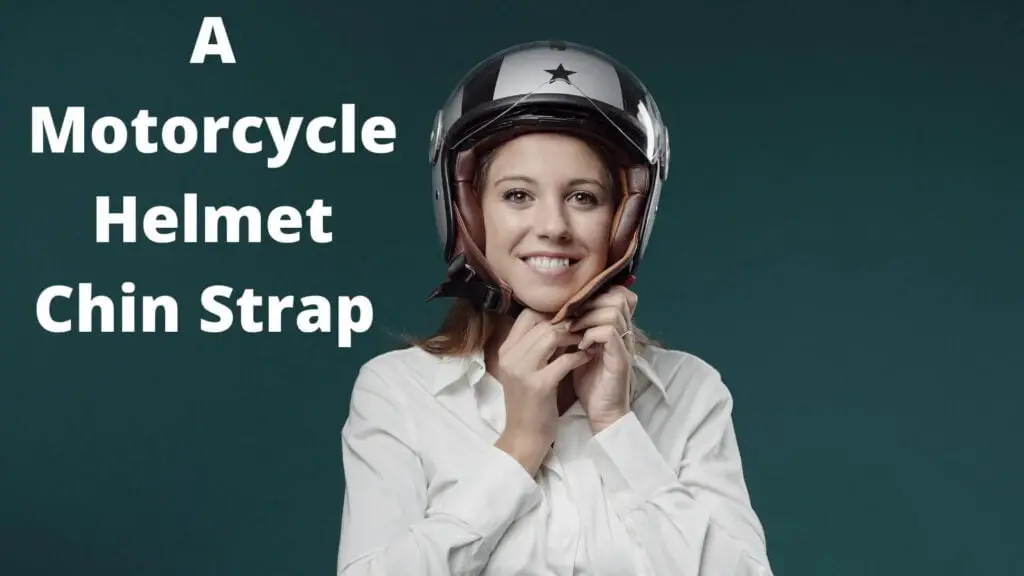
When it comes to motorcycle helmets, most people agree that they should fit snugly. This means that the helmet’s chin strap should be tight enough to ensure that it’s not easily removed or adjusted but not so tight that it causes discomfort.
Some people advocate for a strap that is almost painfully tight, while others feel that a more comfortable fit is better. Ultimately, the best way to find the right fit for your helmet is to try it on and ensure that the chin strap is snug but not too tight.
What are the Best Ways to Fit a Motorcycle Helmet?
This helmet keeps your vital organs from getting hurt. So you should pay close attention to your helmet. If the helmet bothers you while riding a motorcycle, it could lead to an accident.
Remember the following things to make sure the helmet fits well.
- When purchasing a new helmet, ensure that it fits your eyebrows.
- When buying a new helmet, ensure it fits over your eyebrows.
- You shouldn’t feel any pressure on your face. The helmet should be easy to take off with your head. The helmet’s interior can readily enlarge the beginning.
- Inside the helmet, it’s easy to make a face bigger.
- Your helmet should fit nicely on your forehead so it doesn’t slip off.
- Similarly, you must ensure that the nose, mouth, and eyes are correctly aligned.
- In the same way, you must pay attention to the nose, mouth, and eyes to ensure they are in good shape.
Now it’s time for you to try out your new helmet. Your helmet is the proper size if it fits all of the following:
Whether you feel uncomfortable: If your helmet is too tight or too loose, you will feel uncomfortable. Skip it and try something else.
Whether or not you can feel the helmet pad on your cheek: If your helmet fits right, you should be able to handle the place on your cheek. If the helmet moves, you should try another one.
Please wait 30 minutes with the helmet on: At first, it seems like the helmet is a little small. But after 15 to 20 hours of riding, it’s nothing ordinary. If you like the helmet, tell the person selling you the helmet that you want to try it on for about 30 minutes. This should give you a general idea of how tight your helmet is.
FAQS About How Tight Should a Motorcycle Helmet Be?
How Can a Motorcycle Helmet Be Made Tighter?
If your motorbike helmet is too loose, there is a fix. Some helmet manufacturers create comfortable helmets. They replace the cheek pads and inside lining of the helmet. This should hopefully make your helmet comfier. Only reputable firms are willing to give this service.
Does The Helmet For A Motorcycle Become Loose Over Time?
Always get a helmet that is one size smaller than the head’s circumference. After 15 to 20 hours of use, a new helmet might get up to 20% looser. Over time, the helmet pads deteriorate. When the place is thin, the cheek side becomes empty. The helmet seems slack.
Do Eyeglasses Tighten The Motorcycle Helmet?
Currently, most motorcycles offer spaces for eyewear. Check while purchasing a helmet if wearing glasses is necessary. Nevertheless, wearing glasses does not tighten the helmet. If you solely use sunglasses for sun protection, you can use a retractable sun shield instead. A lens is a choice.
Why Does Your Helmet Stick To Your Ears?
The perfect helmet should never cover the ear. Holding your helmet to your ears indicates how snug it is. It is not recommended to drive while wearing such a tight helmet. This can make it difficult to hear the horns of other vehicles. Thus, it would help if you used a helmet with the proper fit.
Is a full-face helmet meant to be snug?
The fit of a full-face helmet should be snug. The helmet should remain stationary on the head. Cannot turn because of the wind. This section describes whether the helmet is too loose or too tight. Check the position of your full-face helmet to ensure that it fits snugly on your head.
The front of a full-face helmet should not extend more than one inch above the eyebrows. If the helmet rises more than one inch, you will recognize that it is too tiny.
Likewise, if the front of the helmet extends below the eyebrows, it is a large helmet. Continue looking until you find the perfect size.
Final Word
In conclusion, when testing a motorcycle helmet, you should remember that it should be snug yet comfortable. It should not be too tight to create discomfort or loosen during riding.
The easiest way to determine whether the helmet fits properly is to wear it. You can do this in an environment where you can feel the compression of the strap on the skin.
Therefore, before donning your helmet, ensure it fits snugly but comfortably.

Hey, I’m Hrithik Hossain. I am the head of helmethacks.com, which specializes in safety helmets. I am looking to connect with anyone interested in purchasing a helmet or who has any questions about different types of helmets. I have over 8 years of experience as a helmet expert, and I can’t wait to help you find the perfect helmet for you. I can help you with any questions regarding helmets, from the best brands to fitting, style, and more! I really enjoy keeping people safe by ensuring they have the best protection possible.


